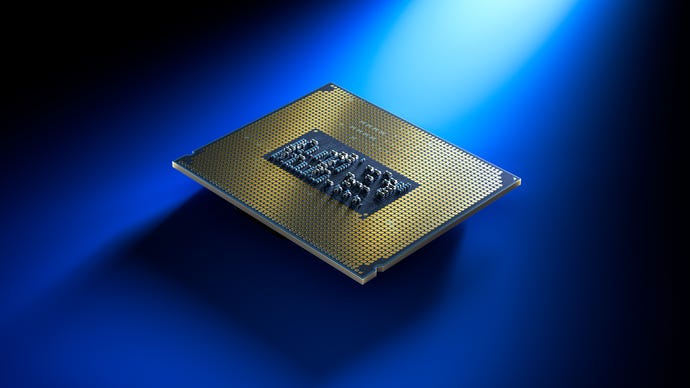Intel have announced their latest batch of desktop CPUs, the Core Ultra 200S series, and it’s got the component giants singing quite a different tune. Instead of trying to stuff in ever more threads, and ever more PC-incinerating clock speeds, the Core Ultra 200S family – spearheaded by the Core Ultra 9 285K when it launches later this year – will dial back certain specs compared the 14th Gen range. Instead, the focus will be on power efficiency and lowering temperatures.
That’s not to say this generation will actively trundle backwards on performance. Intel claim that the Core Ultra 200S’ new P-core and E-core designs have improved IPC (instructions per clock, or basically how much work the core can perform in each clock cycle) by 9% and 32% respectively. And the Core Ultra 9 285K, which replaces the Core i9-14900K, is said to be a in “dead heat” with AMD’s top-spec Ryzen 9 9950X when averaging out all their gaming benchmark differences.
However, this new chip also cuts its thread count to 24 (matching its physical core count but down on the i9-14900K’s 24 core/32 thread setup), while also stepping away from the i9-14900K’s maximum 6GHz clock speed to top out at 5.7GHz instead. It’s a similar story down the rest of the range, too: the Core 5 245K, successor to the more mainstream Core i5-14600K, drops from 20 threads to 14, and from a 5.3GHz max clock speed to 5.2GHz.
A concession that infinite growth is futile, and that gaming CPUs, like their owners, will ultimately decay into insignificant cosmic dust? Not quite. It’s all in aid of better efficiency, y’see, and the Core Ultra 200S range is very much designed to be Intel’s least power-hungry chip generation in years, with total package power down by 40% in some cases. And while it might not get far better framerates out of your graphics card than the 14th Gen crew, if it can at least avoid running slower, that could work out to a tremendous improvement in performance-per-watt.
During a pre-reveal presentation, Intel showed off two PCs running Star Wars Outlaws – both identical, save for one using a Core Ultra 9 285K and the other a Core i9-14900K. The former was pulling about 80W less than the latter, which is an awful lot of juice to save from a single component switch. And while we weren’t shown these tests in action, other games could benefit as much or more: supposedly, the power draw difference between these two CPUs is around 34W in Black Myth: Wukong, 79W in Assassin’s Creed Mirage, and 169W (!) in Warhammer 40,000: Space Marine 2, all in the newer model’s favour. Gulping down fewer watts should also help these chips beat the heat; Intel say that they run 13°c cooler, on average, than the equivalent 14th Gen chips.
I’m keen not get too credulous toward the official numbers, following a torrid year for Intel that started with the underwhelming 14th Gen launch and was marred further by a serious stability defect on both those chips and the 13th Gen range; the Core Ultra 200S series apparently is and always has been unaffected. At the very least, the blue team opting not to go all-cores-blazing on performance, when AMD’s 3D V-Cache processors have claimed the ‘best for games’ crown, could be seen as just a different kind of risky.

And yet, I do kinda see the point. For one thing, simply iterating on speeds hasn’t worked out for Intel; after all the innovation of the 12th Gen Alder Lake series, the two following generations didn’t try anything near as ambitious, resulting in three years’ worth of CPUs that all broadly performed the same. Clearly a change in design thinking was necessary. As was a rethink of Core power draws, especially for the Core i9 variants, which have recently been far too nonplussed about hitting 100°c under load. A 13°c reduction here could literally save your processor’s life.
Even if Core Ultra 200S doesn’t outmuscle the 3D V-Cache crew, then, it’s still a major course correction. And could still find an appreciative audience, whether they simply want to keep their electricity costs down, or have become more sensitive and aware of the environmental impact of their playing habits. Or, if nothing else, a few dozen watts saved on the CPU would allow for a beefier graphics card upgrade without needing to change PSUs.
A new motherboard will be in order, though, as well as a new cooler mounting kit, as the Core Ultra 200S is only compatible with the also-new LGA1851 socket. Now there’s the Intel I know.

